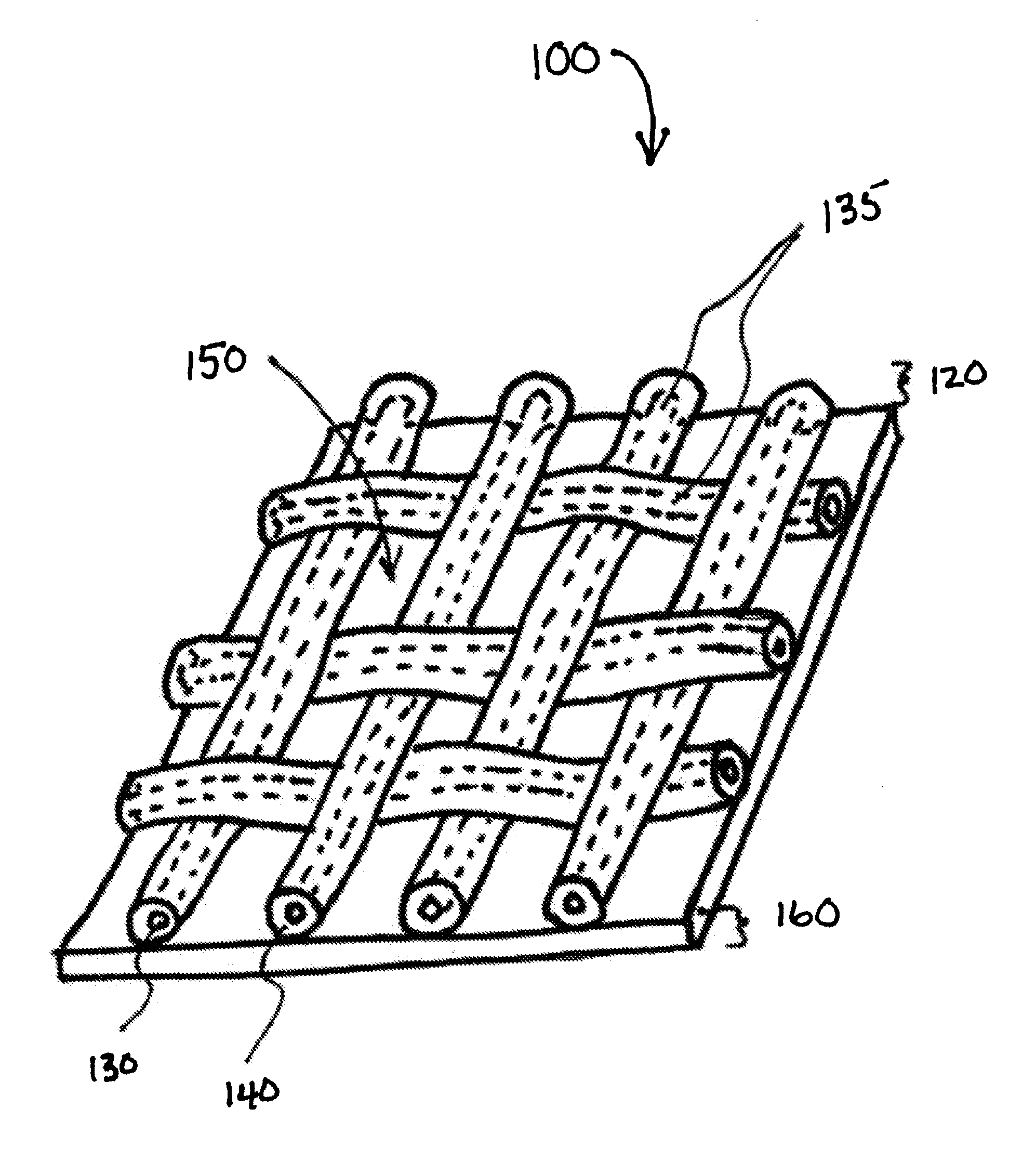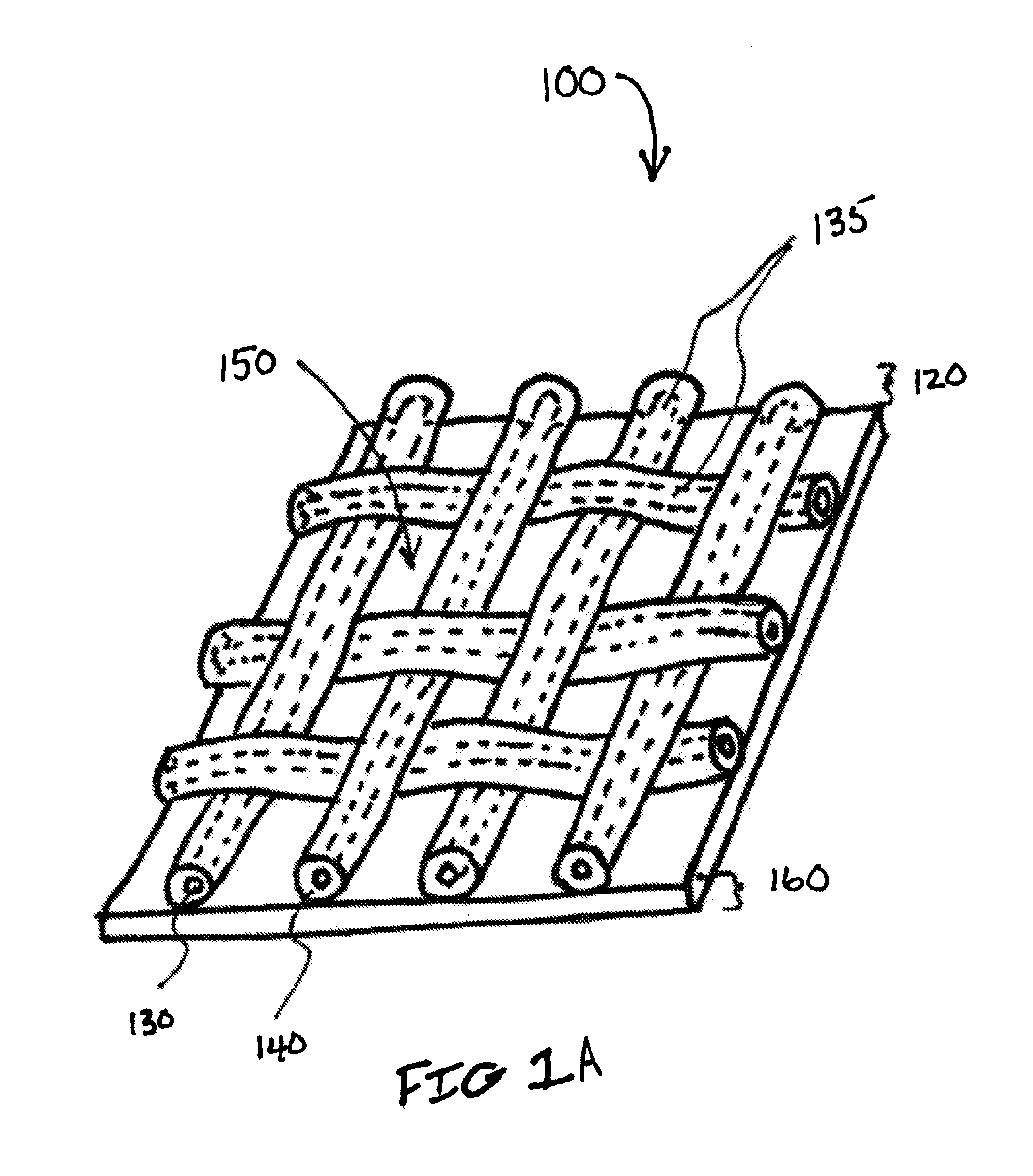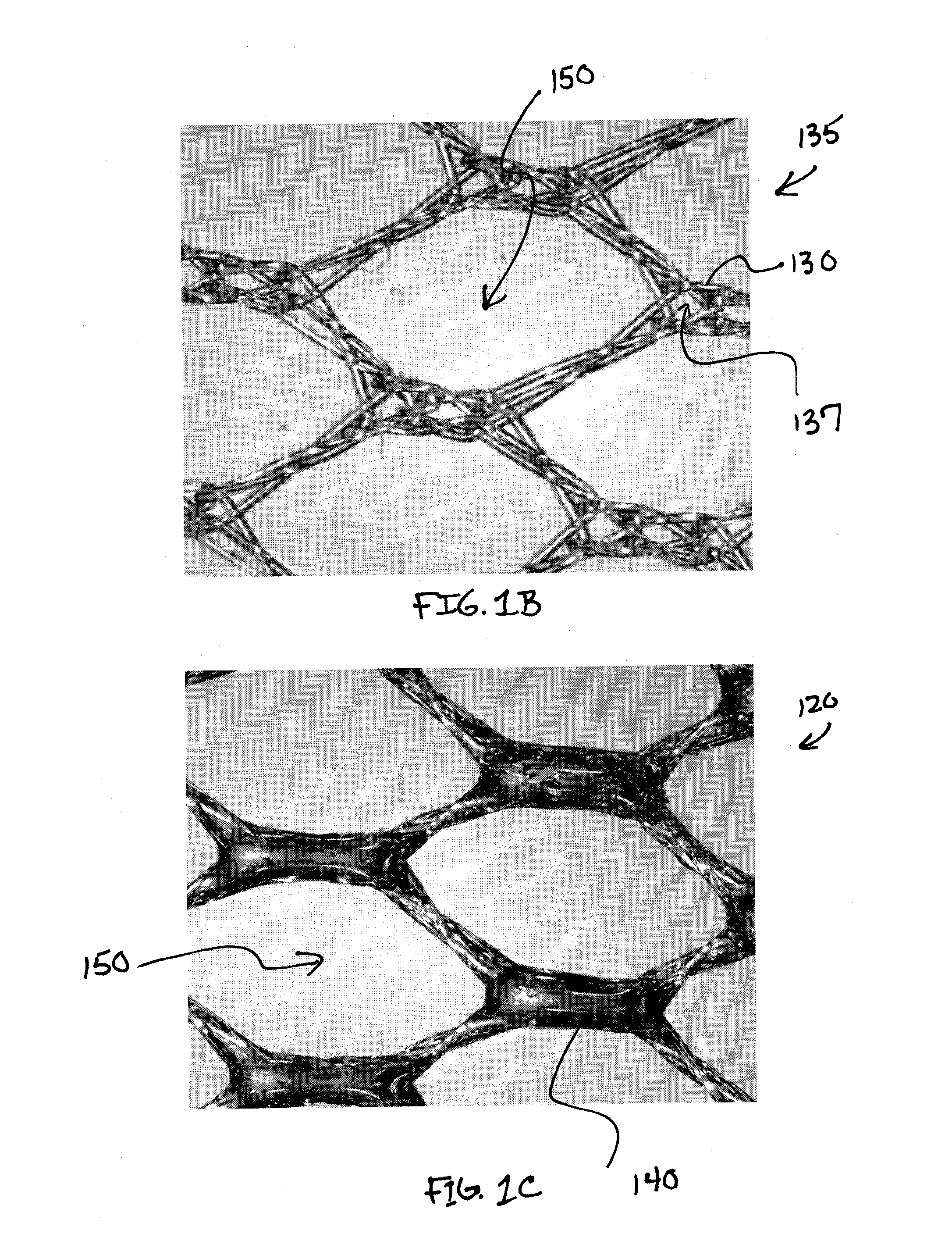Apparatus and method for limiting surgical adhesions
a technology of surgical adhesion and applicator, which is applied in the direction of prosthesis, surgery, coating, etc., can solve the problems of mesh removal, intestinal fistulization, and insufficient physical barriers alone to reinforce abdominal walls or repair abdominal wall defects, etc., and achieve the effect of limiting the incidence of postoperative adhesion
- Summary
- Abstract
- Description
- Claims
- Application Information
AI Technical Summary
Benefits of technology
Problems solved by technology
Method used
Image
Examples
Embodiment Construction
[0048]Disclosed herein are composite prostheses that can be useful in parietal surgery, in the repair of eventrations or hernias. These descriptions are used as examples of embodiments and use of these embodiments of the invention and are not intended to limit embodiments or uses.
The Apparatus:
[0049]Referring to FIG. 1A, the composite prosthesis 100 for limiting the incidence of postoperative adhesions includes a tissue infiltratable mesh 135 comprising one or more fibers 130 coated with a biocompatible coating 140 creating a coated mesh 120. The coated mesh 120 is fully or partially covered on one or both sides by an adhesion resistant bioabsorbable barrier material 160. The coated mesh 120 construction creates a plurality of pores, windows or openings 150 which are of sufficient size and orientation to allow sufficient tissue through-growth to secure the composite prosthesis 100 to a defect site once the stimulus for tissue adhesion formation has subsided and the barrier material ...
PUM
| Property | Measurement | Unit |
|---|---|---|
| thickness | aaaaa | aaaaa |
| thickness | aaaaa | aaaaa |
| pore size | aaaaa | aaaaa |
Abstract
Description
Claims
Application Information
 Login to View More
Login to View More - R&D
- Intellectual Property
- Life Sciences
- Materials
- Tech Scout
- Unparalleled Data Quality
- Higher Quality Content
- 60% Fewer Hallucinations
Browse by: Latest US Patents, China's latest patents, Technical Efficacy Thesaurus, Application Domain, Technology Topic, Popular Technical Reports.
© 2025 PatSnap. All rights reserved.Legal|Privacy policy|Modern Slavery Act Transparency Statement|Sitemap|About US| Contact US: help@patsnap.com



